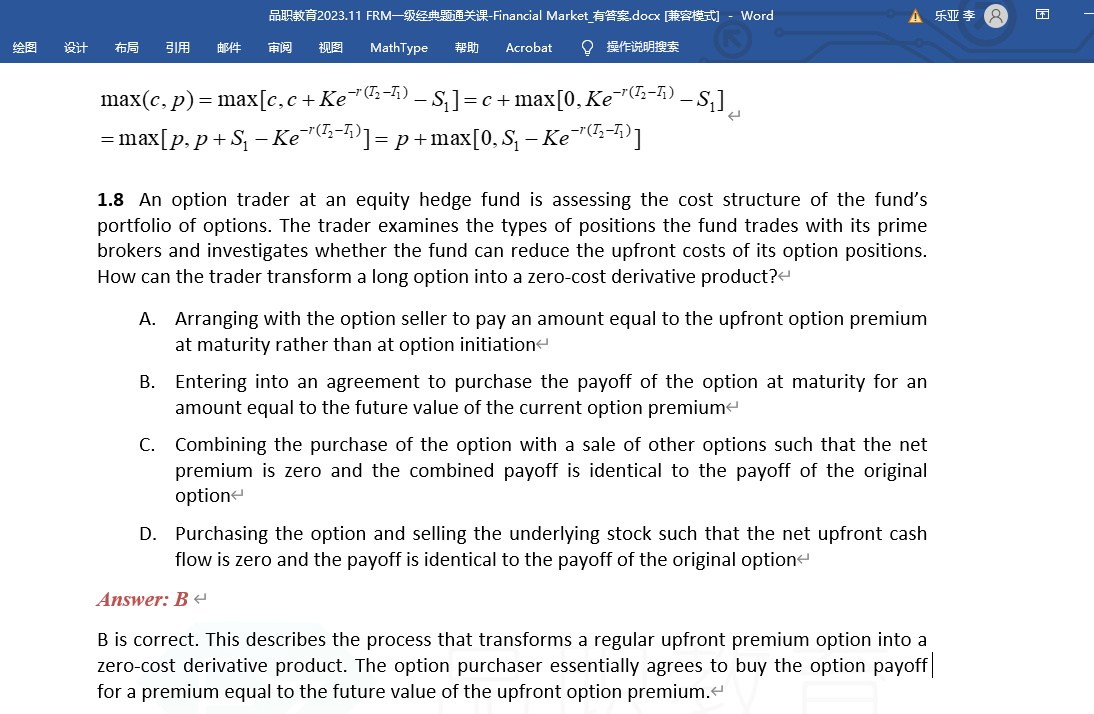NO.PZ2023091802000127
问题如下:
An option trader at an equity hedge fund is assessing the cost structure of the fund’s portfolio of options. The trader examines the types of positions the fund trades with its prime brokers and investigates whether the fund can reduce the upfront costs of its option positions. How can the trader transform a long option into a zero-cost derivative product?
选项:
A.Arranging with the option seller to pay an amount equal to the upfront option premium at maturity rather than at option initiation
B.Entering into an agreement to purchase the payoff of the option at maturity for an amount equal to the future value of the current option premium
C.Combining the purchase of the option with a sale of other options such that the net premium is zero and the combined payoff is identical to the payoff of the original option
D.Purchasing the option and selling the underlying stock such that the net upfront cash flow is zero and the payoff is identical to the payoff of the original option
解释:
B is correct. This describes the process that transforms a regular
upfront premium option into a zero-cost derivative product. The option
purchaser essentially agrees to buy the option payoff for a premium equal to
the future value of the upfront option premium.
A is incorrect. The option buyer would not be
able to pay the same premium at maturity as they would at option initiation.
The premium would be increased by an interest charge.
C is incorrect. A single option can be
packaged with other options to make the net premium zero but the payoff will
not remain identical. Generally, there is a trade-off involving the cost of the
position and the payoff of the position. For example, if the payoff of a call
could be structured with a package of options resulting in no cost, there would
be no need for outright calls. This is not the process described to make any
derivative a zero-cost product.
D is incorrect. It is not going to have the
same payoff.
看完题目的解释还是不理解




